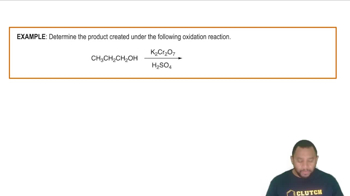Textbook Question
Propanol is very soluble in water, but ethanethiol and chloroethane are only slightly soluble. Explain.

 Verified step by step guidance
Verified step by step guidance Verified video answer for a similar problem:
Verified video answer for a similar problem:



 1:49m
1:49mMaster Thiol Redox Reaction Concept 1 with a bite sized video explanation from Jules
Start learning